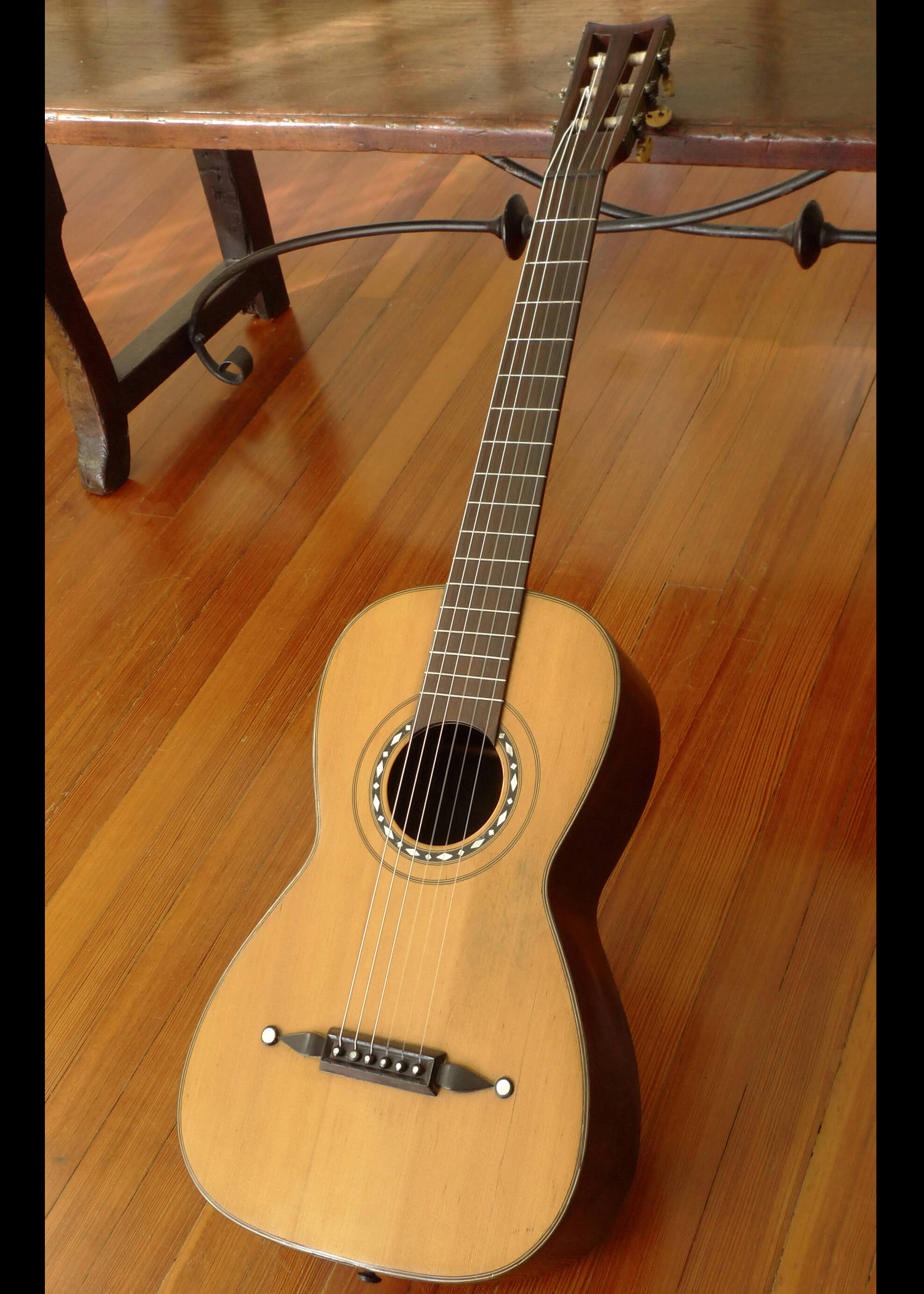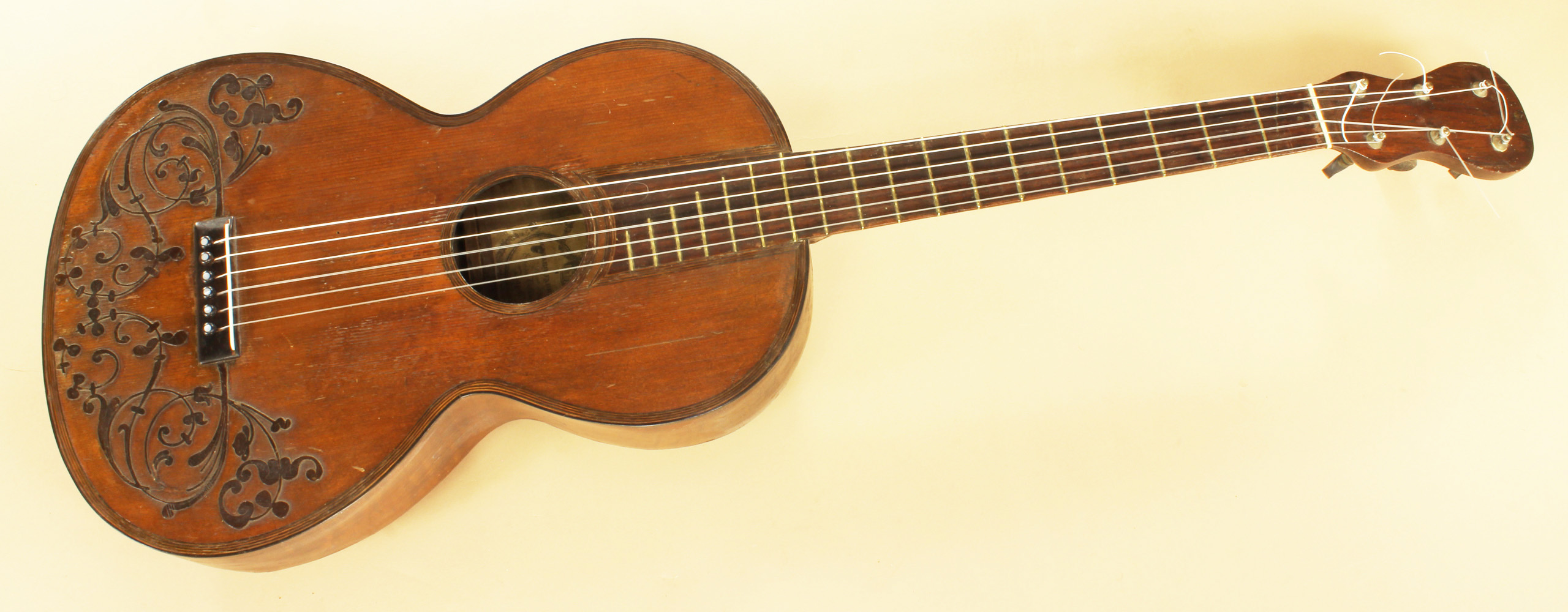
Very Rare Antique Guitar Around 18th Century
During the Classical period (roughly late 18th century), the Spanish influence on the guitar continued to be prominent. One of the most renowned composers and guitarists of this time was Fernando Sor. Sor, a Spanish virtuoso, composed numerous guitar works that showcased the instrument's expressive capabilities.

Very Rare Antique Guitar Around 18th Century
The Prelude in D minor, BWV 998, is a well-known and challenging work by Johann Sebastian Bach. It is originally written for the lute, but it is often transc.

How Conservators Have Been Restoring The Gardner's Raphael Room To
This is the instrument of the 17th and 18th century, the instrument of players/composers like Visee, Sanz, Corbetta. The baroque guitar had 5 double gut string courses (first string single), with tied-on gut frets. The soundhole was always filled with a delicate rosette, made of several layers of parchment.

Very Rare Antique Guitar Around 18th Century
In England, the instrument popular in the late 18th century was not really a guitar, but a cittern in C-tuning called a "guittar". In the second quarter of the 19th century, as immigrants from primarily Spain and France brought the new 6-string early classical guitar / romantic guitar, the English seem to have adopted the French and Spanish style.

English Guitar. Date late 18th century. Geography London, England
The romantic guitar eventually led to Antonio de Torres Jurado's fan-braced Spanish guitars, the immediate precursors of the modern classical guitar. From the late 18th century the guitar achieved considerable general popularity though, as Ruggero Chiesa stated, subsequent scholars have largely ignored its place in classical music.

54 best Baroque Guitars images on Pinterest Baroque, Guitars and
It wasn't until around 1820 that the standard guitar had 6 strings. Women also played harps, but not before the end of the 18th century. Drums and trumpets, trombones and French horns, 'cellos, violas da gamba, clarinets, oboes and bassoons, glass armonicas, hammered dulcimers, organs—all these appeared, in varying numbers, within the colonies.

Petit Jean 19th Century Guitar 1830 Savage Classical Guitar
In the 16th century, small-bodied, four-course guitars made in France and Spain were used to play polyphonic music in a variety of tunings. Composers used different systems of tablature in France, Italy, and Spain to notate their music. Among the significant early composers were Alonso Mudarra (c. 1510-1580) from Spain, and Guillaume de.

Rare 1840’s Guiot Guitar, Panormo Vintage American Guitar
Click picture to play - opens in new window. A history of the development of the guitar in four minutes, from its first appearance. in the late 15th century to the present day, featuring guitar music from 1551 to modern. times played by Ian Pittaway, Rolf Lislevand, Robert Trent, Robert Johnson, Lester Junior Barnard, Jimi Hendrix and Martin.

four ukulele guitars lined up in a row on the floor next to each other
Leipzig Museum Guitars of the 17th century till the 19th century and Leipzig Museum Guitars of the late 18th century and the early 19th century. Another good gallery is the Musical Instrument Collection of C.V.F., Canada which is now on-line.

portrait of a lady, thre musical instruments 18th century portraits
The history of the guitar generally goes back to two instruments, the oud and the lute, which predate written history. Many say that a man known as Lamech, who was Noah's grandfather and the sixth grandson of Adam and Eve, designed the Arab precursor to the guitar. Lamech was apparently inspired to design the shape of the instrument, known as.
.jpg)
North Italian School, 18th Century , A man playing a guitar in an
An ornate guitar made by a Joakim Thielke (1641-1719) of Germany was altered in this way and became a success. From the mid-18th century through the early 19th century, the guitar evolved into a six-string instrument, phasing out courses by preference to single strings. These six-string guitars were still smaller than the modern classical guitar.

Guitar in Art From Baroque to Modernism Widewalls
By the 18th century, guitars were being mass produced, often in large quantities because of the high volume of orders that were being placed.. During the 19th century, guitar manufacturers in Spain and France changed the overall design of the guitar, making it more familiar to the 6 stringed acoustic guitars that we are familiar with today.

martinez L.Panormo 18th century master Grade classical guitarsin
Undated sources from the late 18th century, largely French or Italian in origin, include sonatas and instrumental music with guitar by Amon, Calegari, Doisy, Gragnani, L'Hoyer, Merchi, Molino, Pleyel, Porro and Sheidler. The style of this late 18th century guitar music derives more from piano and violin music, rather than a native guitar idiom.

The Guitar in the Classic and Romantic Periods, c.17501850
France 1789 : Italy 1792 : The body shape of these late 18th century 1789 and 1792 guitars look nearly identical to the older Baroque guitars. They are, however, modern 6-string guitars. These guitars are in the French museum Musee de la Musique, and we can be relatively certain of their authenticity.The body shape is typical of the late 18th century, and the frets are on the soundboard like.

18th century guitar converted to 6strings from 5x2 strings c1780 Cigar
The 16th-century guitar was tuned C-F-A-D′, the tuning of the centre four courses of the lute and of the vihuela. From the 16th to the 19th century several changes occurred in the instrument. A fifth course of strings was added before 1600; by the late 18th century a sixth course was added.

Pin auf Gibson gitaren
It might be a tiny stretch to call the 0-18 a parlor, but it is Martin's smallest full-sized guitar. With its modified low oval neck and high-performance taper, the 0-18 is highly playable and delivers that classic small-bodied Martin sound in spades. Fraulini Guitar Co. Loretta. Price: From $3,200.